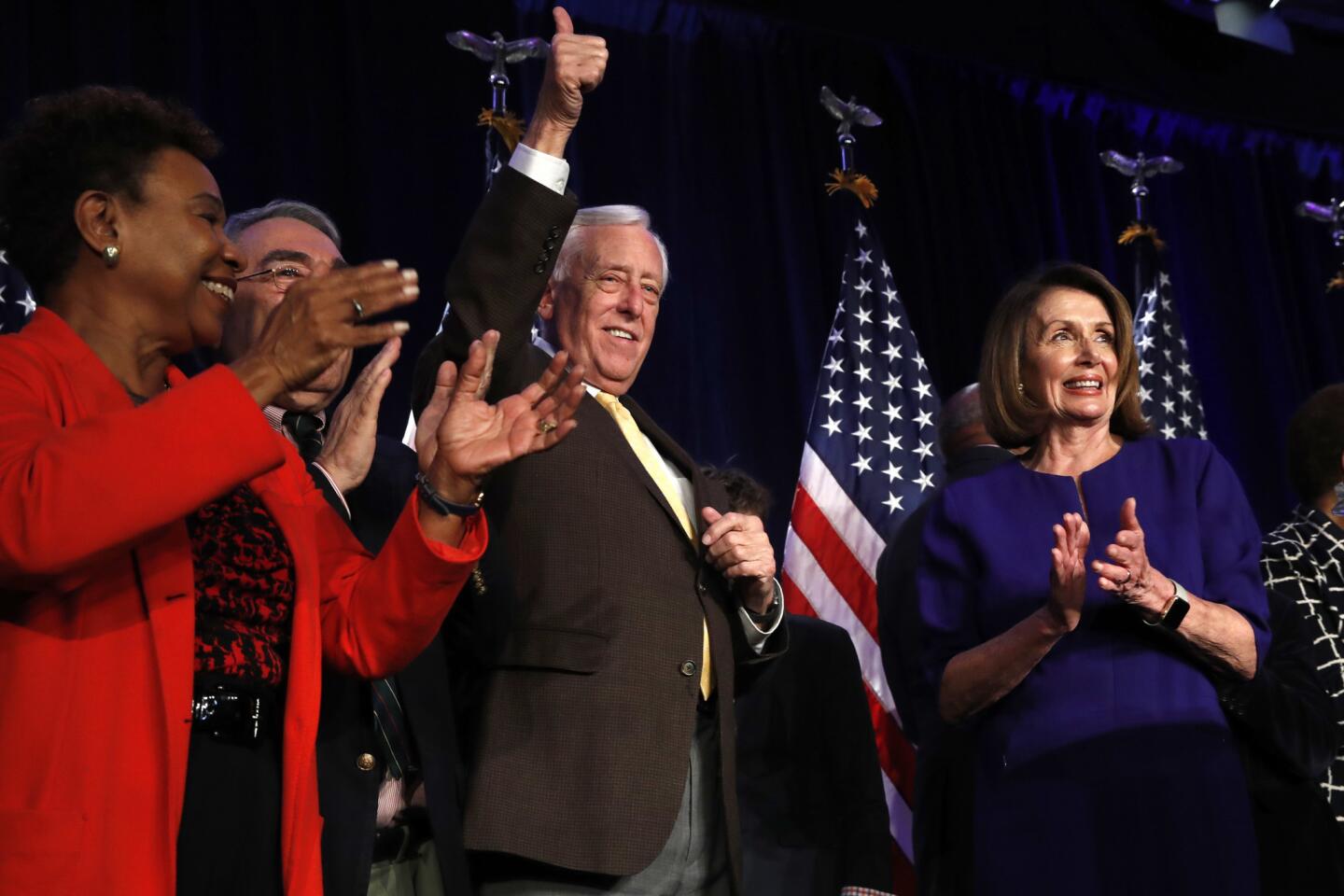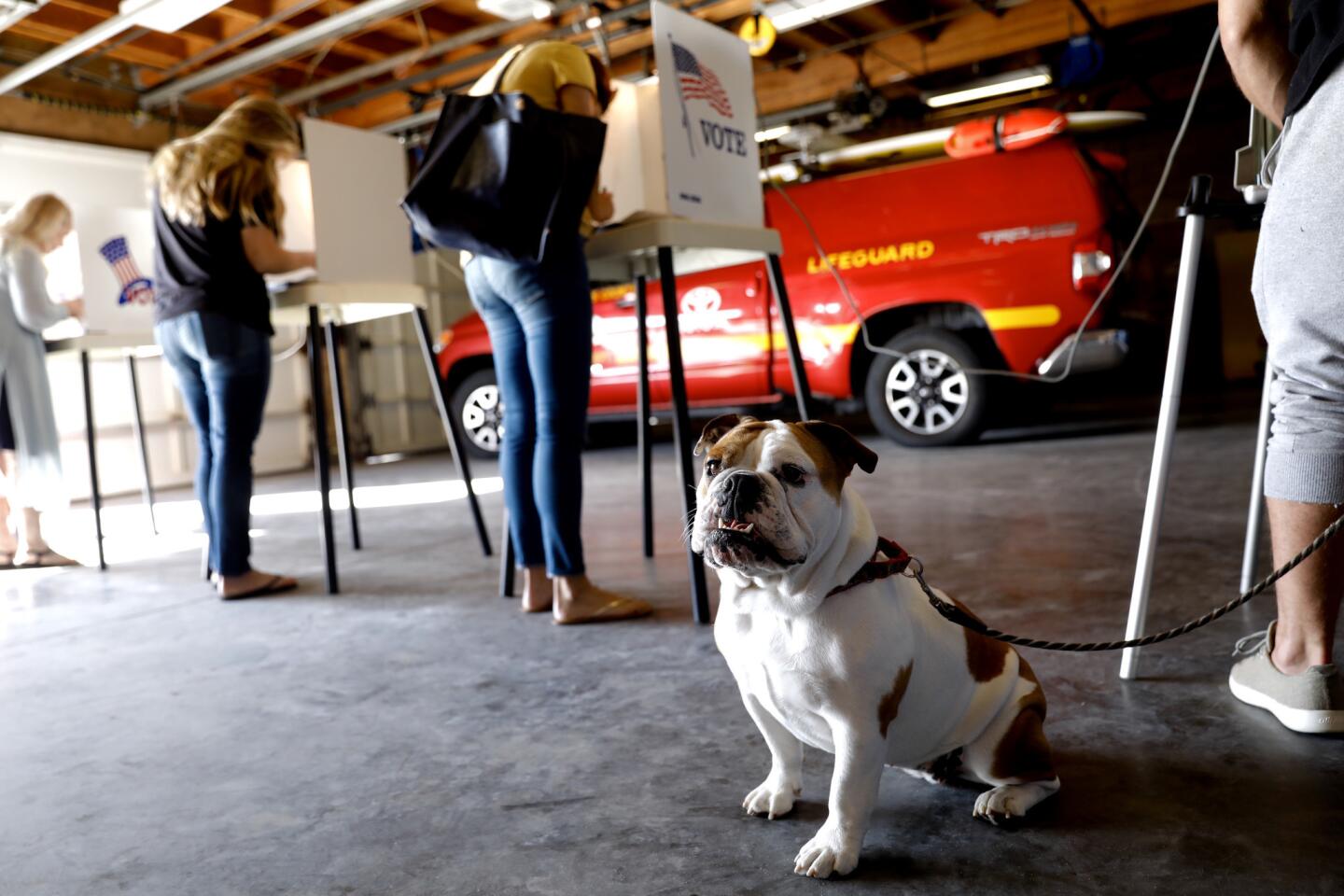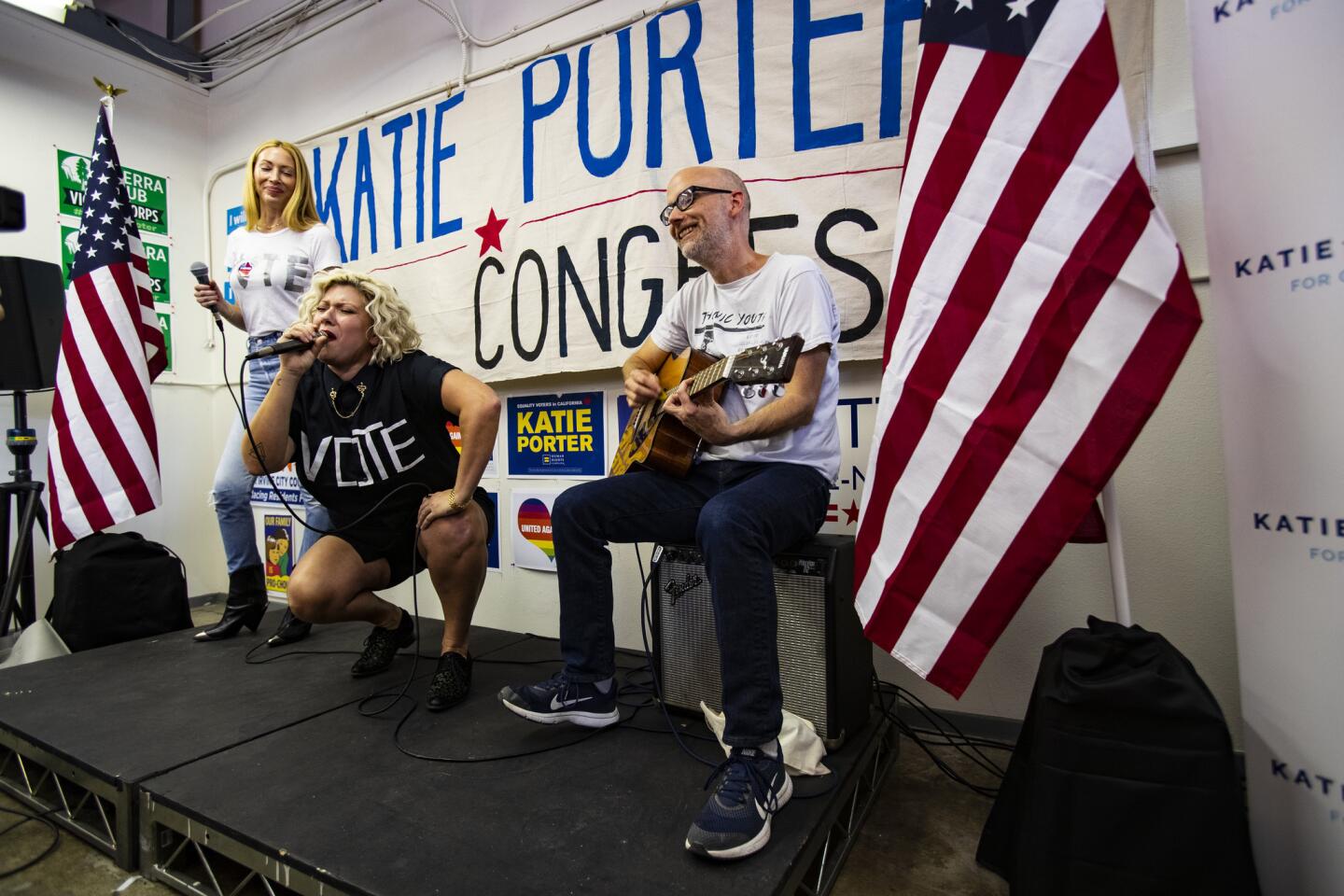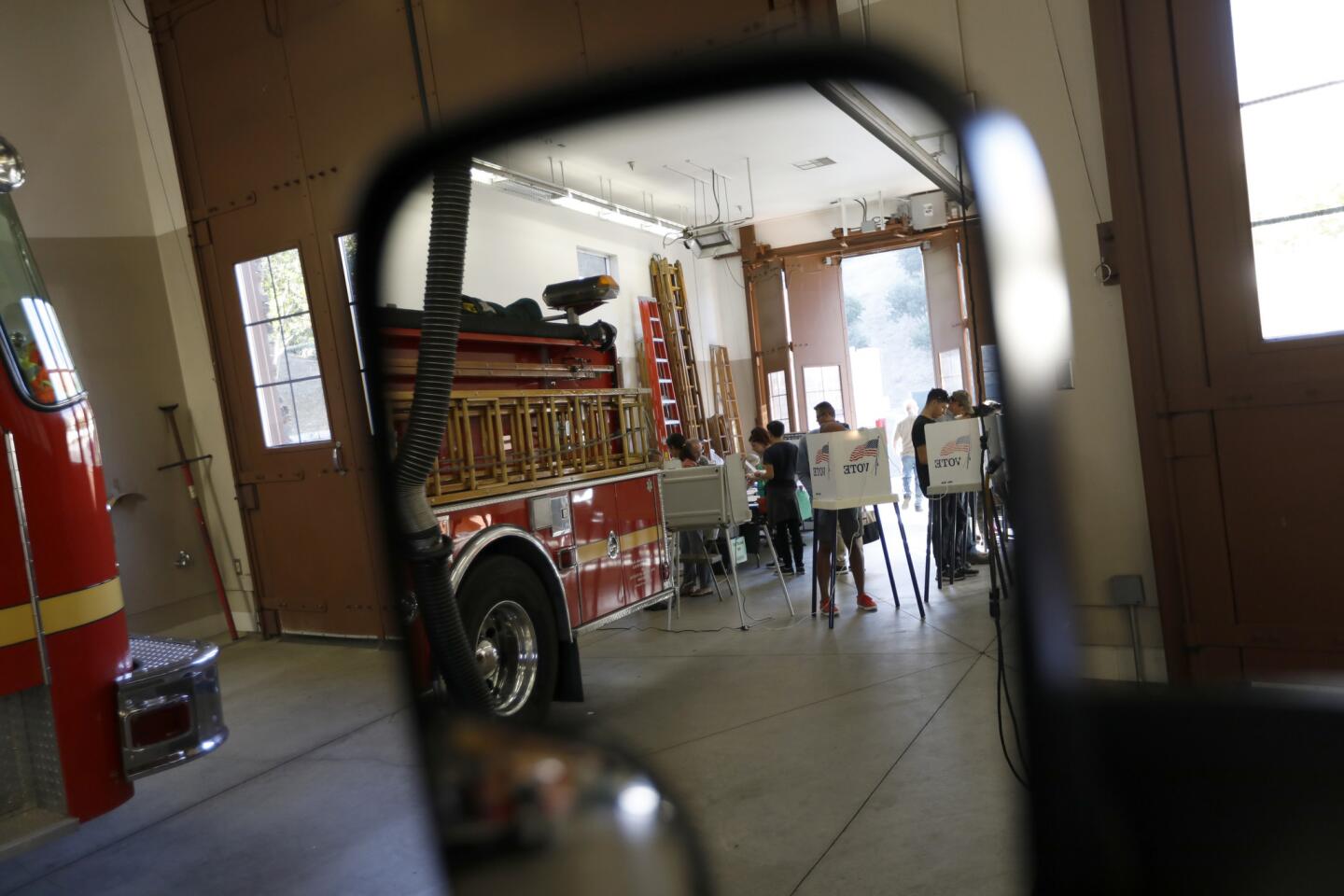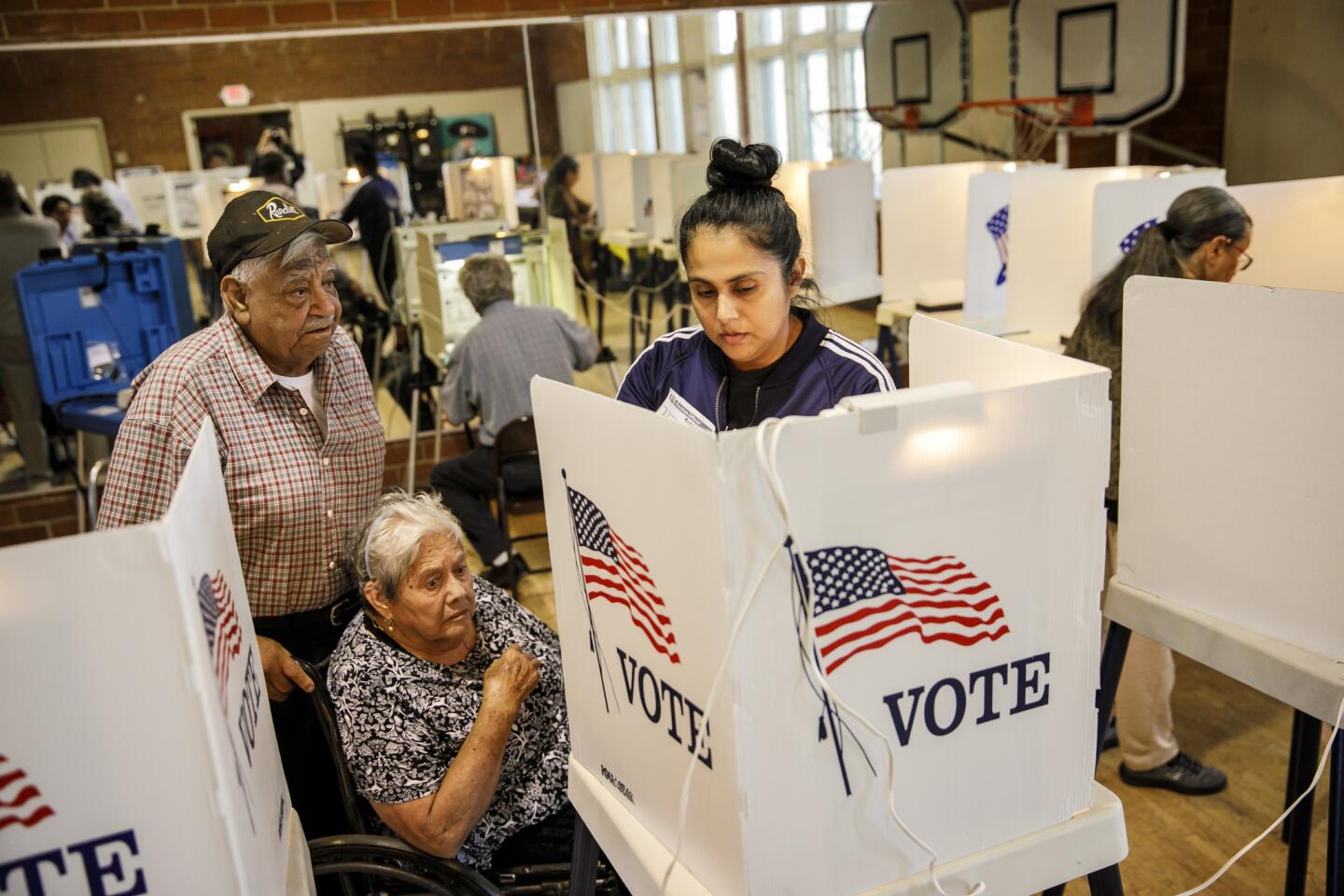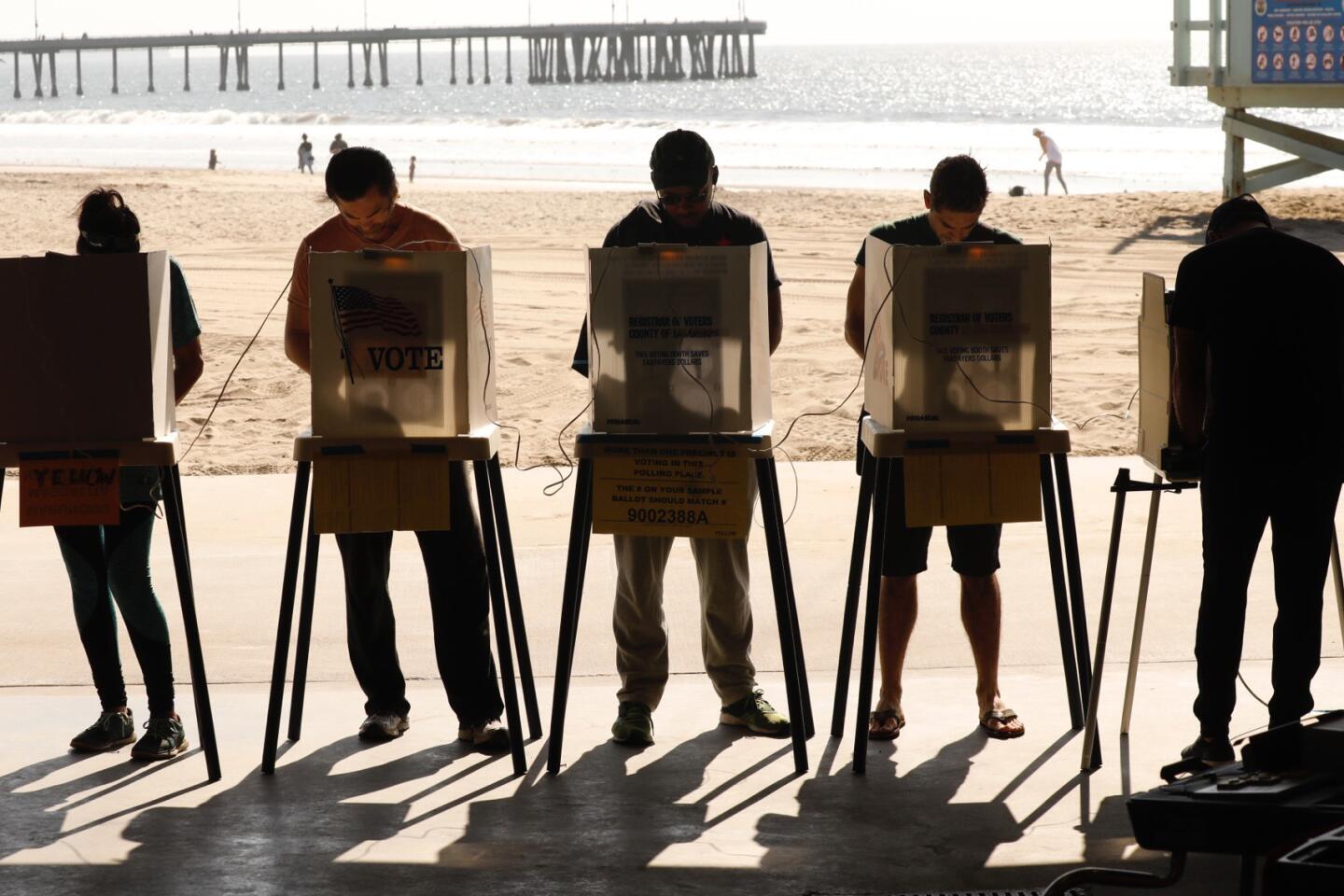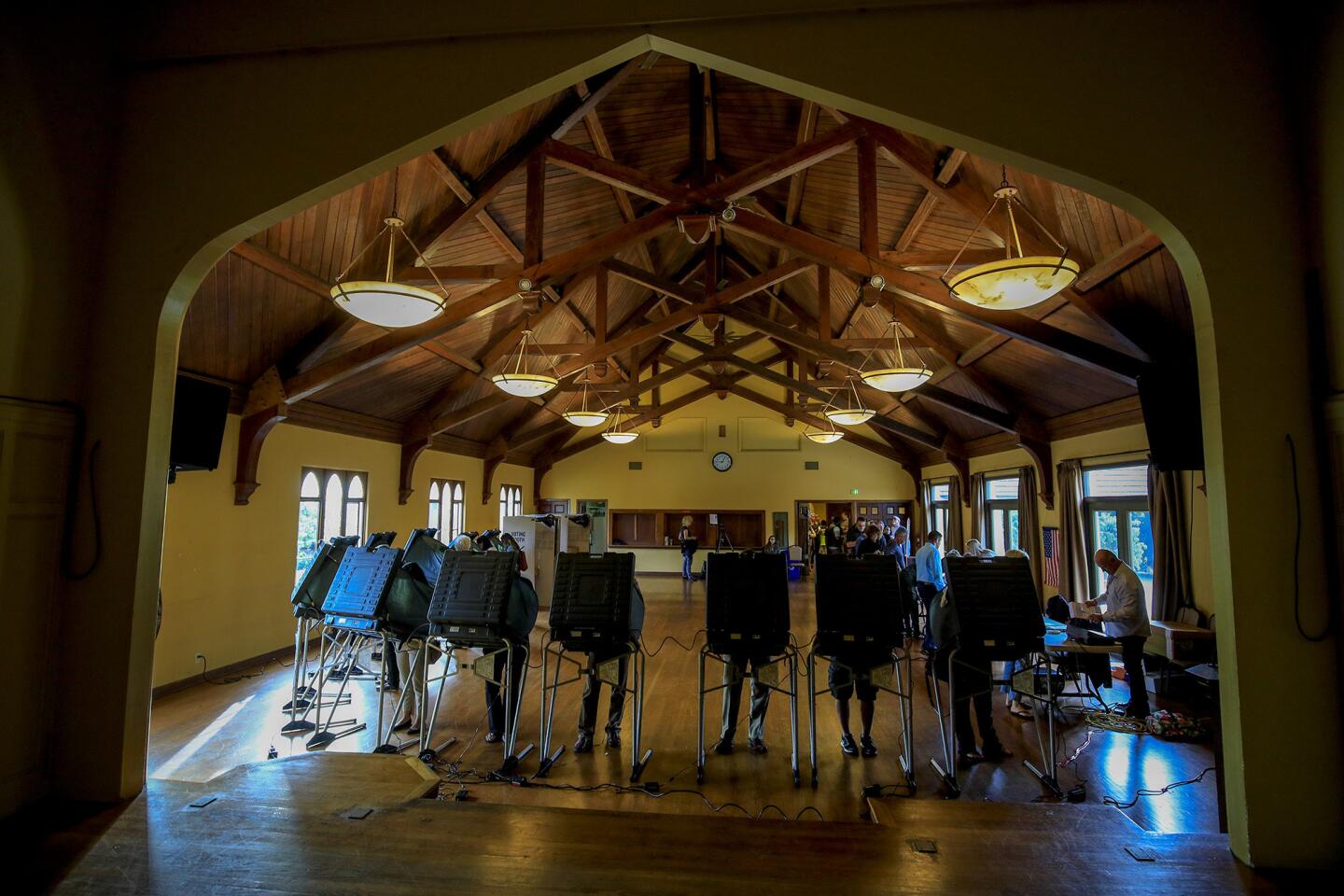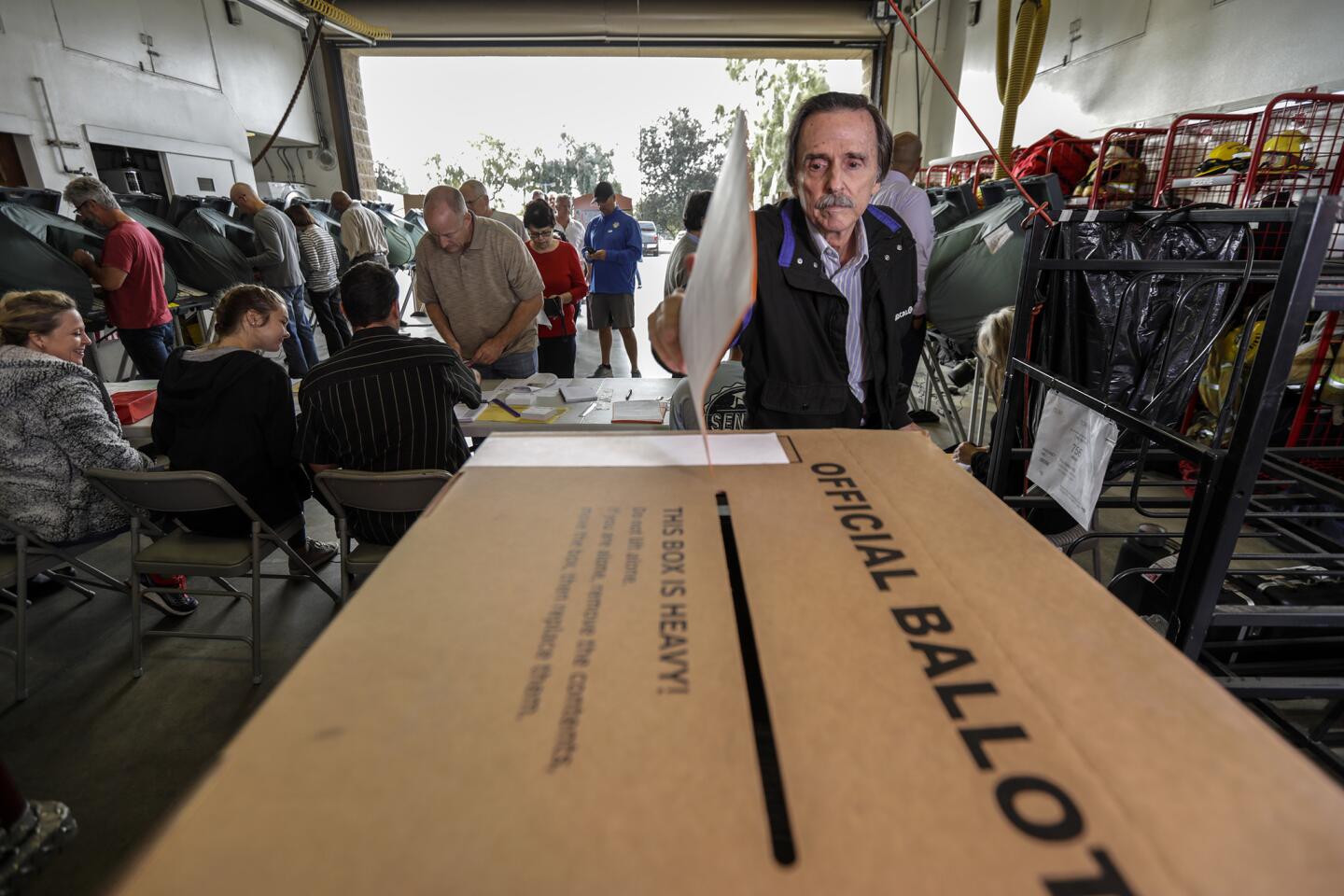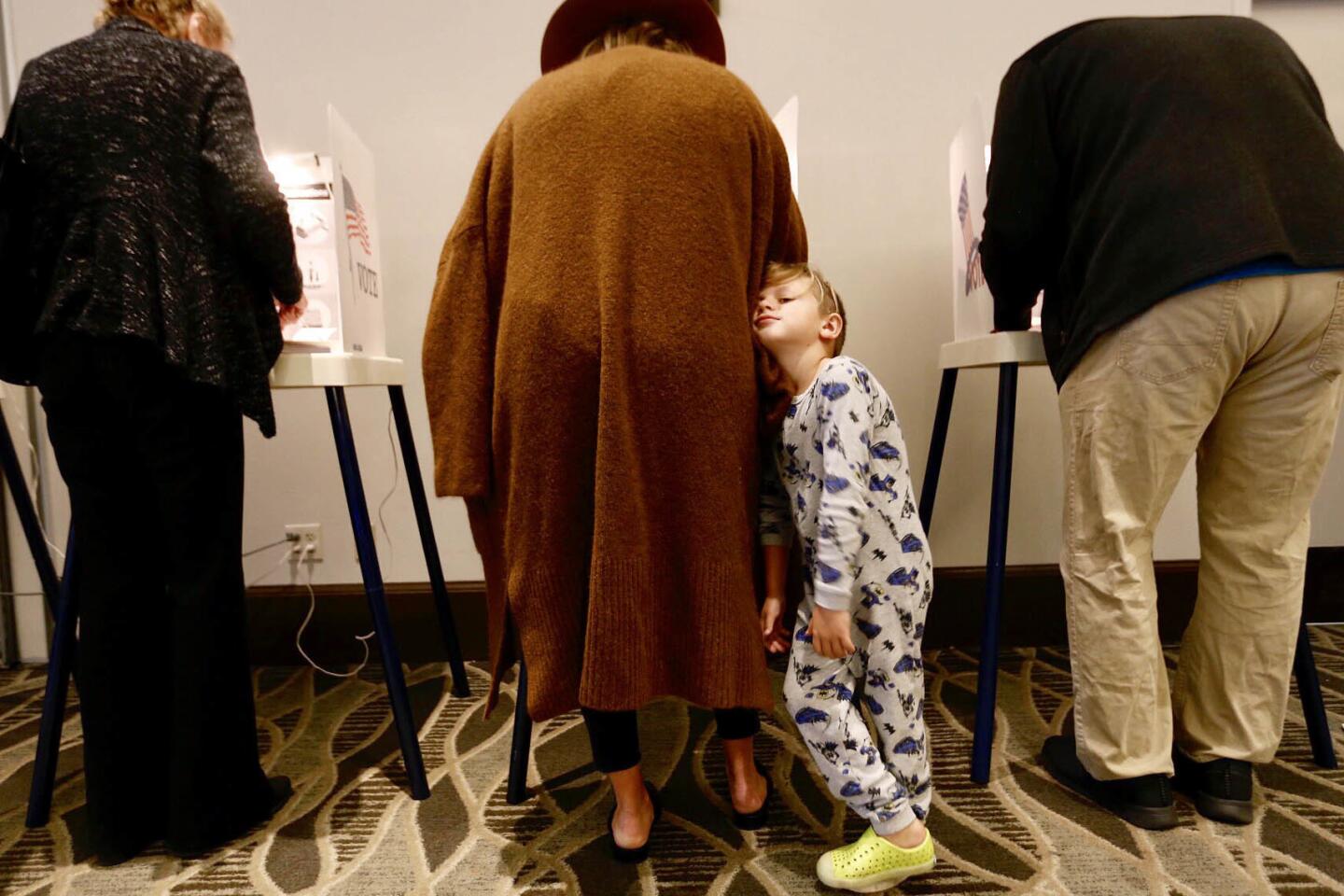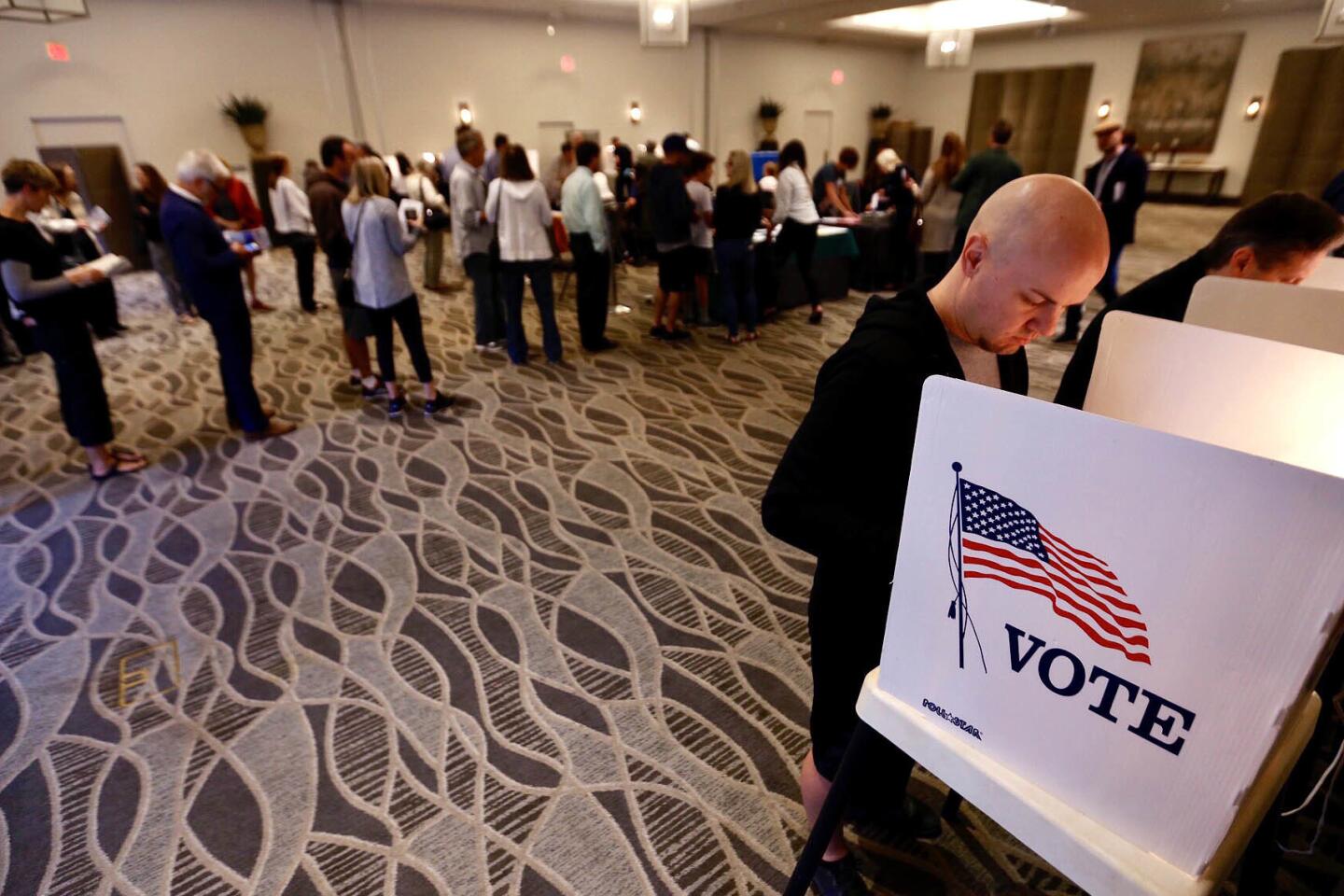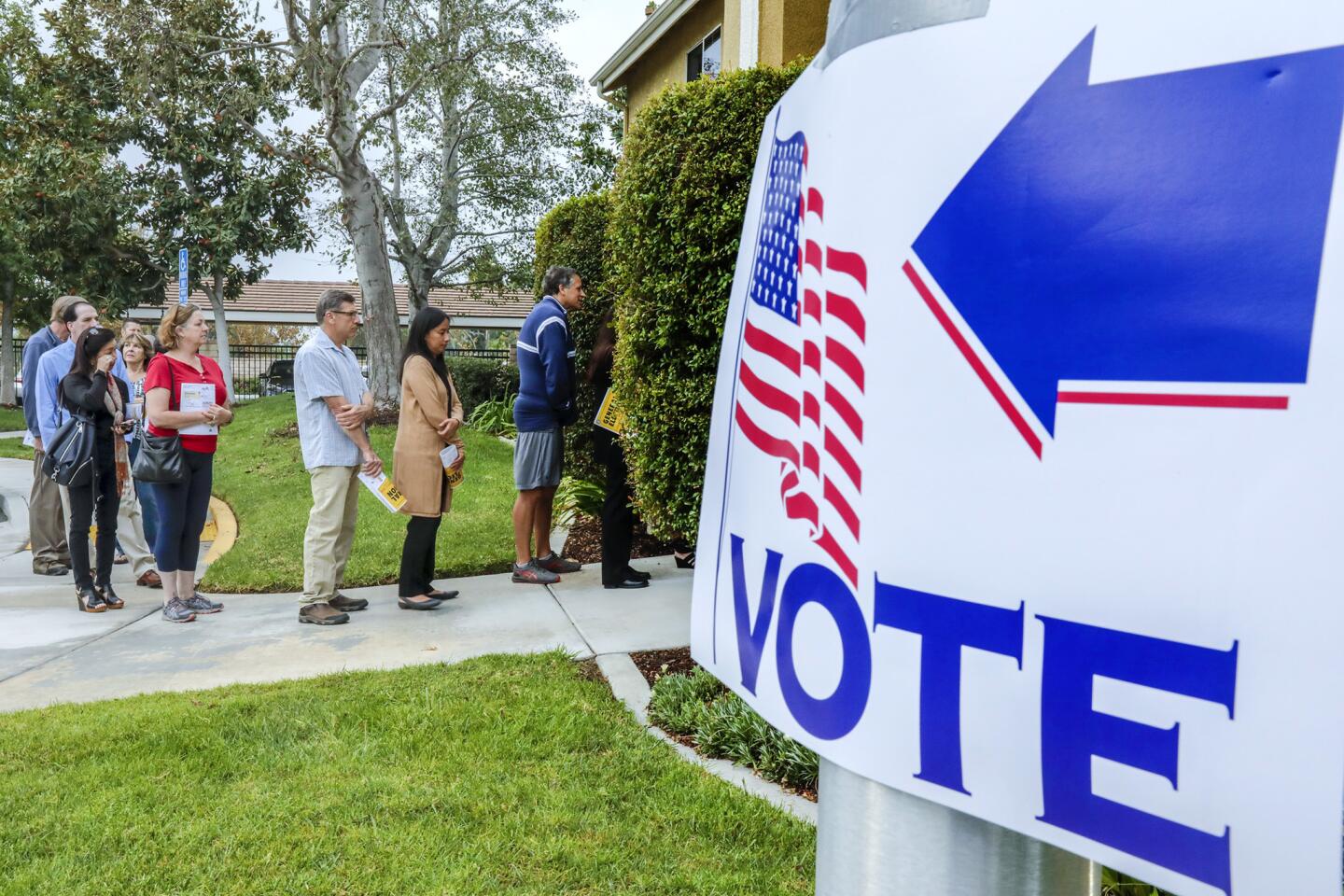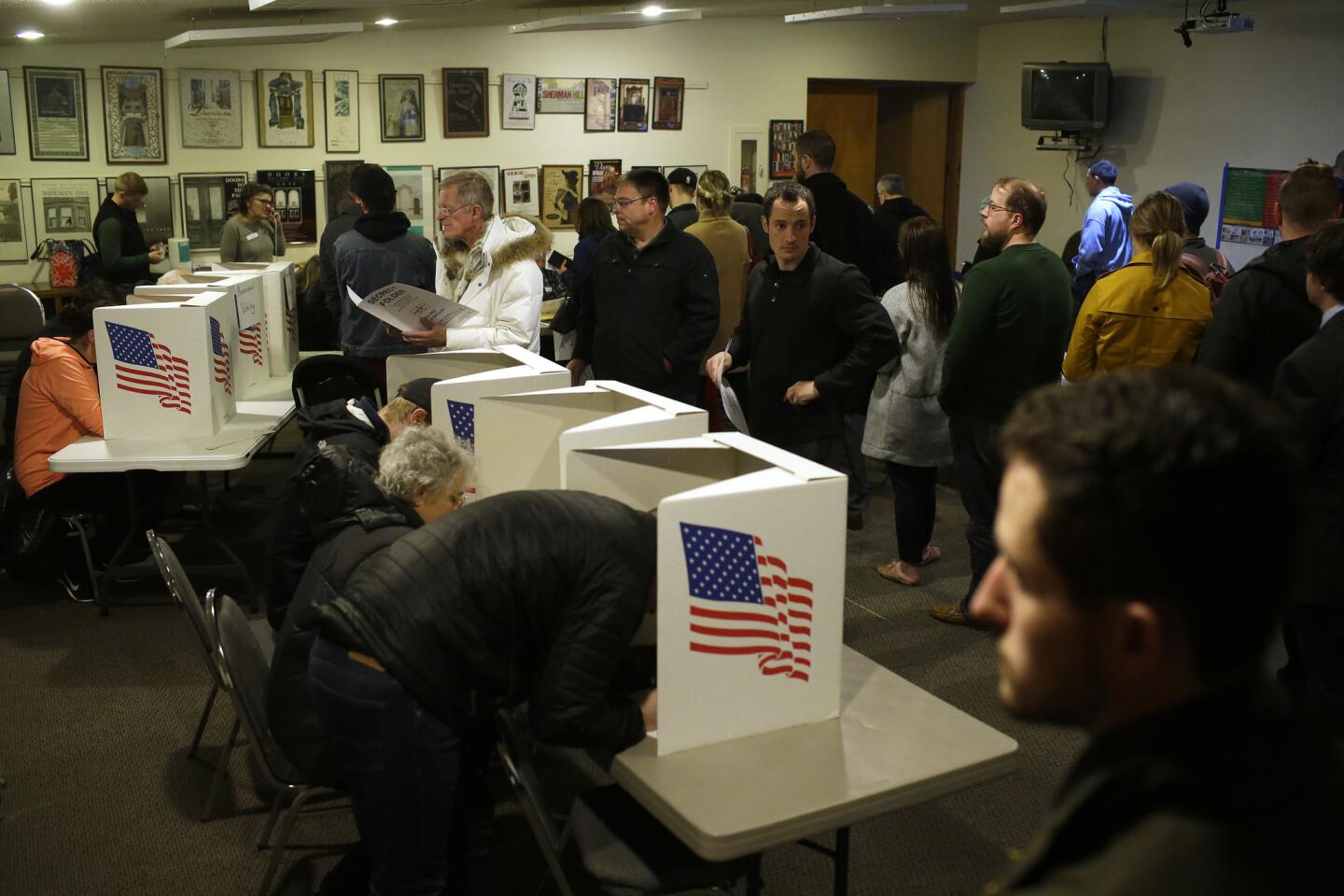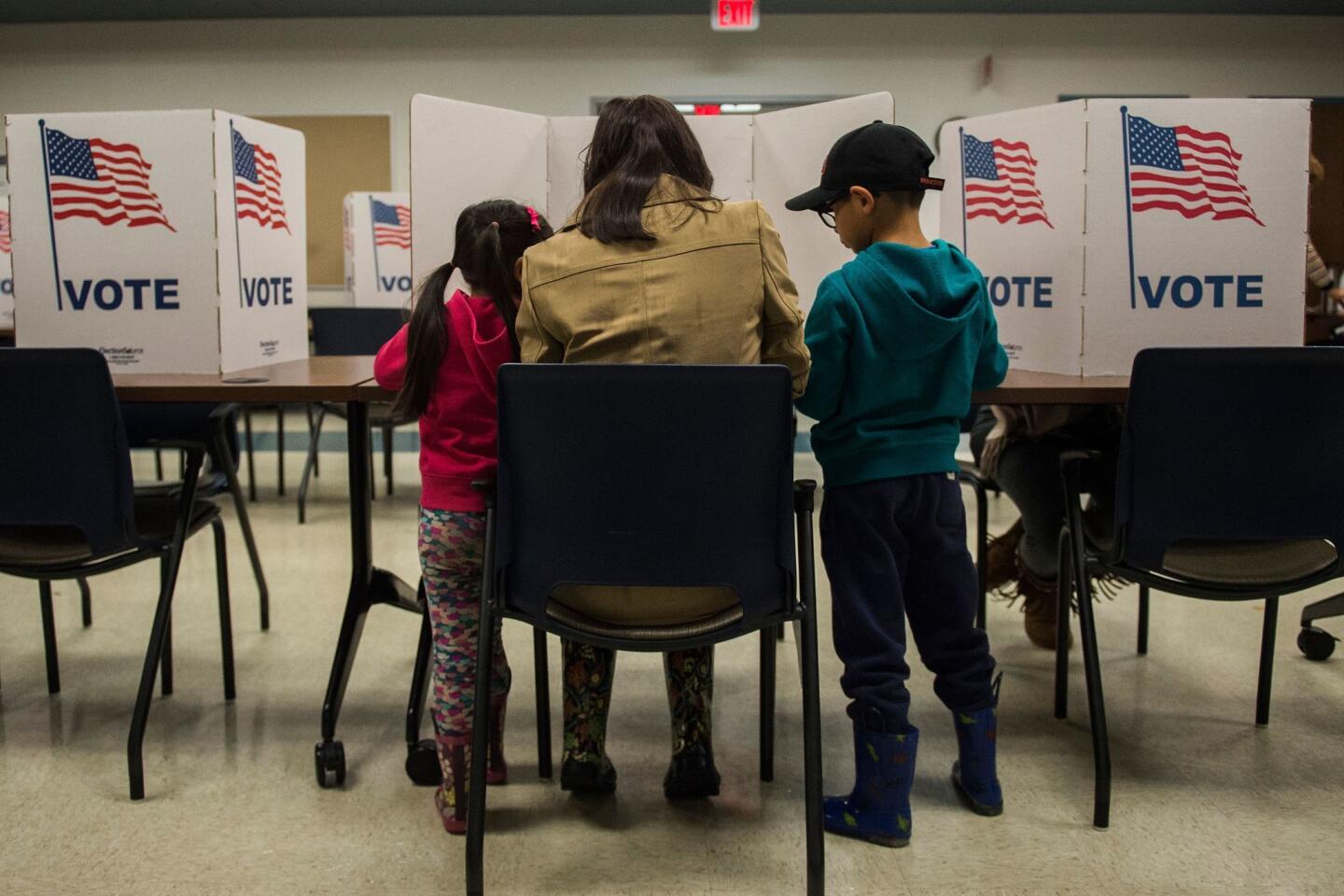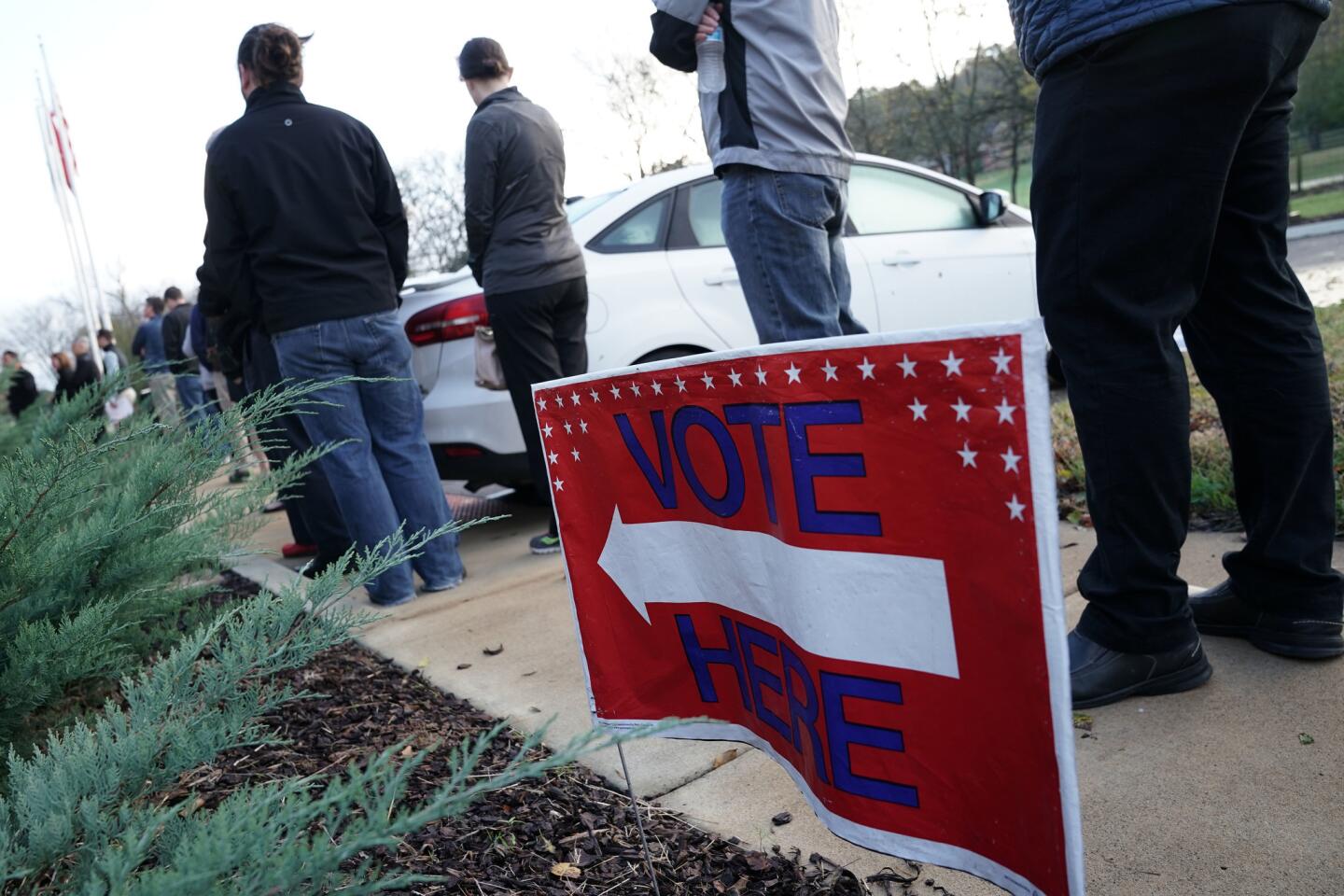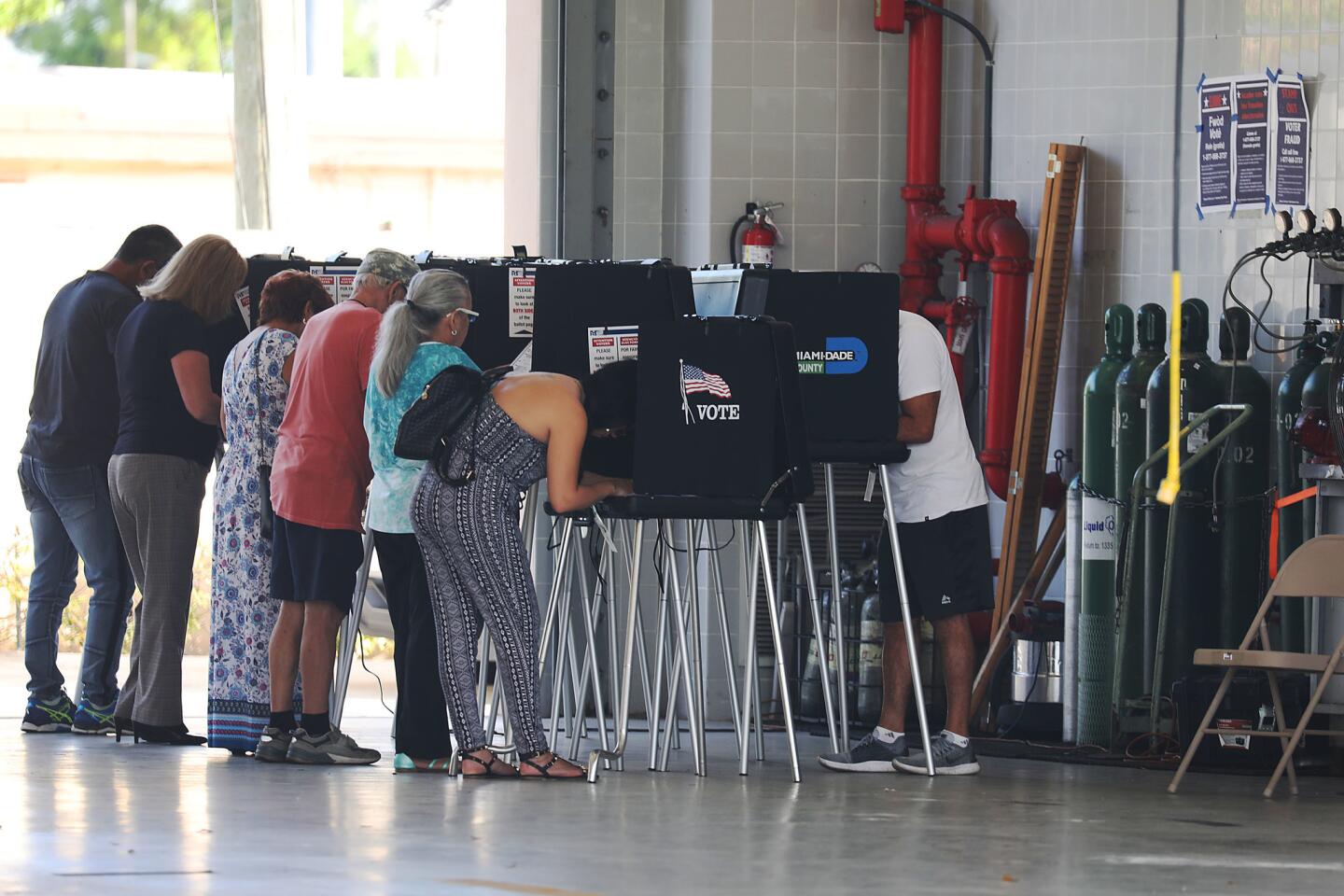Democrats take the House? Republicans hold the Senate? A look at the most likely outcomes of the next Congress
Reporting from Washington — Tuesday’s election boils down to three likely scenarios.
After the surprising results in the 2016 presidential election, pundits are reluctant to make predictions. But expectations are generally that Democrats will gain the 23 seats they need to take control of the House but may lose ground in the Senate, allowing Republicans to widen their 51-49 majority.
Here’s a look at what’s likely in store for the next Congress, depending upon the outcome:
1. Democrats win the House, Republicans keep the Senate
This seems the mostly likely scenario. Democratic enthusiasm has been high since the day after the 2016 election and remains strong headed into election day, putting seats once assumed to be safe into play in the final days. President Trump and national Republicans largely turned their attention in recent weeks toward keeping the Senate, signaling they recognize how difficult it could be for Republicans to hold enough seats to keep control of the House.
House Minority Leader Nancy Pelosi (D-San Francisco) boldly predicted that Democrats will win back the House.
Democrats need 23 additional seats to retake the chamber. But the margin of the majority will be important. A slim majority of, say, fewer than seven seats, will make it much harder for Pelosi to both regain the speaker’s gavel and, assuming she does, keep the Democratic caucus united. That’s because some progressive Democratic candidates have promised they would not vote for Pelosi for speaker. If they win, those new representatives will be hard-pressed to go back on their word. That could mean Pelosi would face a serious challenge for speaker.
If Democrats end up with a cushion of more than 15 seats — meaning they gain 38 additional districts or more on Tuesday — that job becomes much easier. Progressives could keep their word and vote for another Democrat, but Pelosi would still have the support she needs to regain the gavel.
A Democratic takeover of the House — while Republicans keep the Senate — very likely means there will be no major legislation passed by Congress over the next two years. It may also increase the chances of another government shutdown if the divided government can’t even agree on funding measures to keep the lights on.
House Democrats may very well pass a progressive wish-list of campaign finance reform, gun control, helping young immigrants, protecting special counsel Robert S. Mueller III or even Medicare for All. But all such measures would likely be dead on arrival in the Senate. There are some issues, such as infrastructure, where both parties might find agreement. But the odds of passing something significant, particularly in the run-up to the 2020 presidential race, are low. And even if both chambers were to pass a bill, Trump could veto it and House Republicans are unlikely to help override his decision.
Bottom line: Expect the gridlock in Congress to get even worse. (Believe it or not, yes it can.) Trump’s window to get money for his border wall, push through another tax cut or repeal Obamacare is probably closed. But Trump will gain a convenient scapegoat to blame for everything from stock market turmoil, crime, rising interest rates and illegal immigration: the Democratic-controlled House.
House Democrats may not be able to push their bills into law, but they are certain to use their new majority — and the powers that go with it — to pursue a variety of investigations into Trump Cabinet members accused of misusing taxpayer funds; to subpoena Trump’s tax returns and probe his business ties; to reopen the House inquiry into his campaign’s link to Russia during the 2016 campaign; and quite possibly pass articles of impeachment against the president, depending upon how big the Democratic majority is.
A Republican-controlled Senate is unlikely to convict Trump. Under GOP control, the Senate is expected to resume its efforts to reshape the federal judiciary by filling hundreds of lifetime positions with young conservatives, something the House has no say in.
2. Democrats win the House and the Senate
It’s a long shot, particularly given the recent polling in key toss-up Senate races. Democrats would need to sweep them all, and then still pick up additional seats in deep red states.
But if Democrats win both chambers, expect things to get combative very quickly.
Democrats would move forward on legislative priorities that have gotten little traction since Republicans gained control of Congress, such as healthcare and protecting Dreamer immigrants. They could pass a bill to protect Mueller from being fired by the White House. They could try to scale back some of the tax perks given by Trump and Republicans to corporations and the rich. But realistically the chances remain slim that any would become law.
First, any Democratic Senate majority would likely be narrow, short of the 60 votes needed to avoid a Republican filibuster. And even if legislation passed in both chambers, Trump could veto it and Democrats would likely lack the votes for an override.
That same math would protect Trump from impeachment, which requires a two-thirds vote in the Senate.
Democrats would likely try anyway to pass a series of bills, as political messaging for the 2020 race and to force Trump and Republicans to make uncomfortable votes. But again, gridlock would reign.
The one area where Democrats would have a freer hand is investigating the Trump administration. They would control numerous committees with broad powers to demand information from the administration. They could enjoy much stronger leverage in setting government budgets, but chances of a government shutdown would also grow.
As for Trump, a Democratic-controlled Congress, like a Democratic House, would become his target and scapegoat, leading to more attempts to bypass the legislative branch with executive actions and orders.
3. Republicans hold the House and the Senate
This outcome would be Republicans’ ideal, in part because there’s a decent chance that they will widen their Senate majority on Tuesday given the number of Democratic seats that are vulnerable in states Trump won.
It’s unlikely they would win enough new seats to give them a filibuster-proof, 60-seat majority. But even a slight boost from the current 51-seat majority would give them more cushion in those cases where only 50 votes are needed in the Senate.
The GOP effort to repeal Obamacare, which was pushed through using special budget rules, failed by just one vote. And the confirmation of Brett M. Kavanaugh to the Supreme Court became a real nail-biter thanks to the doubts of just two or three GOP moderates.
Republicans have said they would try to resume their effort to repeal Obamacare and pass another tax cut. But even with government under one party — as it is now — such efforts won’t be easy without gaining some measure of bipartisan support — something Republicans have shown little interest in securing over the past two years.
One important new dynamic will be who takes over from retiring House Speaker Paul D. Ryan. House Majority Leader Kevin McCarthy has been crisscrossing the country for months raising money and campaigning for Republicans. He’s the front-runner, though the party’s hard-right wing appears unsold on him.
If the GOP House majority narrowed, which would be likely, that would make the next speaker’s job even harder, with a more conservative conference to work with and less wiggle room for intra-party disagreements. Republicans might have to work with Democrats if they want to get all but the most noncontroversial legislation through the chamber.
For Democrats, a scenario where Republicans keep both chambers would be transformative, particularly given their confidence going into the election. If Democrats fail to make any gains Tuesday, expect a lot of soul-searching, a further shift toward the left and a movement to replace Pelosi and the rest of caucus leadership.
More stories from Sarah D. Wire »
Follow @sarahdwire on Twitter
More to Read
Get the L.A. Times Politics newsletter
Deeply reported insights into legislation, politics and policy from Sacramento, Washington and beyond. In your inbox three times per week.
You may occasionally receive promotional content from the Los Angeles Times.
